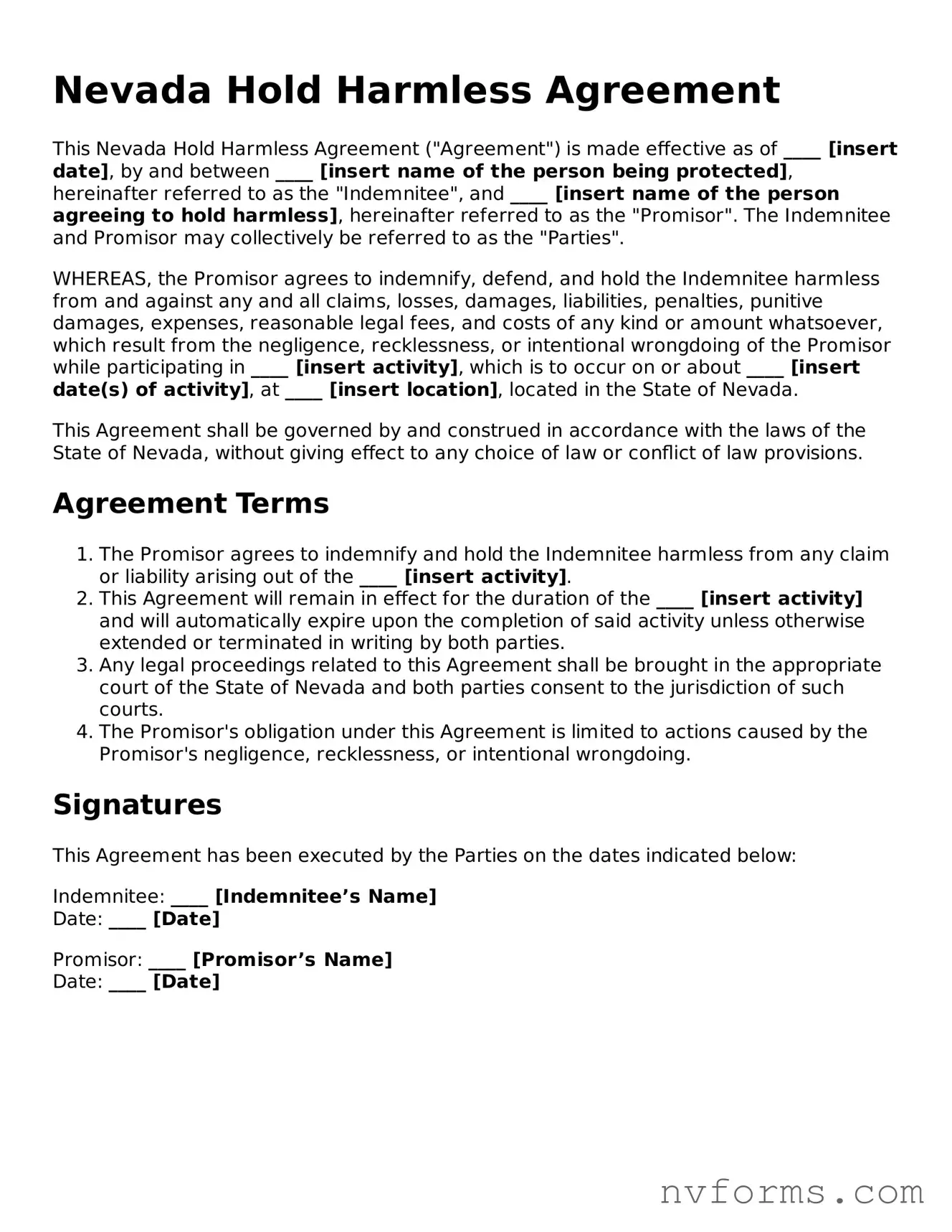Nevada Hold Harmless Agreement
This Nevada Hold Harmless Agreement ("Agreement") is made effective as of ____ [insert date], by and between ____ [insert name of the person being protected], hereinafter referred to as the "Indemnitee", and ____ [insert name of the person agreeing to hold harmless], hereinafter referred to as the "Promisor". The Indemnitee and Promisor may collectively be referred to as the "Parties".
WHEREAS, the Promisor agrees to indemnify, defend, and hold the Indemnitee harmless from and against any and all claims, losses, damages, liabilities, penalties, punitive damages, expenses, reasonable legal fees, and costs of any kind or amount whatsoever, which result from the negligence, recklessness, or intentional wrongdoing of the Promisor while participating in ____ [insert activity], which is to occur on or about ____ [insert date(s) of activity], at ____ [insert location], located in the State of Nevada.
This Agreement shall be governed by and construed in accordance with the laws of the State of Nevada, without giving effect to any choice of law or conflict of law provisions.
Agreement Terms
- The Promisor agrees to indemnify and hold the Indemnitee harmless from any claim or liability arising out of the ____ [insert activity].
- This Agreement will remain in effect for the duration of the ____ [insert activity] and will automatically expire upon the completion of said activity unless otherwise extended or terminated in writing by both parties.
- Any legal proceedings related to this Agreement shall be brought in the appropriate court of the State of Nevada and both parties consent to the jurisdiction of such courts.
- The Promisor's obligation under this Agreement is limited to actions caused by the Promisor's negligence, recklessness, or intentional wrongdoing.
Signatures
This Agreement has been executed by the Parties on the dates indicated below:
Indemnitee: ____ [Indemnitee’s Name]
Date: ____ [Date]
Promisor: ____ [Promisor’s Name]
Date: ____ [Date]
